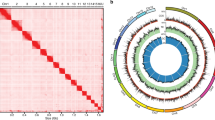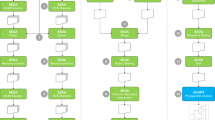Abstract:
We have partially sequenced 785 sequences of 596 independent complementary DNA clones isolated from a cDNA library of Japanese flounder leukocytes infected with hirame rhabdovirus. These sequences consist of a total of 565,977 base pairs. The average size of the sequenced lengths was 721 bp. Of 596 clones, 386 (64.8%) were identified as previously reported genes by the BLASTN and BLASTX programs. About 30% of the identified clones could be recognized by only the BLASTX program. A total of 251 distinct genes were identified, and 181 of these genes are the first such genes reported from the teleostei. Approximately 27% of the identified Japanese flounder genes appear to be associated with cell division, cell structure or motility, and basic energy metabolism, 29% with gene or protein expression, and 17% with cell signaling, cell communication, and cell or organism defense. The most frequently identified expressed sequence tags of leukocytes of Japanese flounder were gelatinase b and ribosomal protein L23, which both had 1.34% prevalence.
Similar content being viewed by others
Author information
Authors and Affiliations
Additional information
Received February 12, 1999; accepted April 13, 1999
Rights and permissions
About this article
Cite this article
Aoki, T., Nam, BH., Hirono, I. et al. Sequences of 596 cDNA Clones (565,977 bp) of Japanese Flounder (Paralichthys olivaceus) Leukocytes Infected with Hirame Rhabdovirus. Mar. Biotechnol. 1, 477–488 (1999). https://doi.org/10.1007/PL00011804
Issue Date:
DOI: https://doi.org/10.1007/PL00011804




